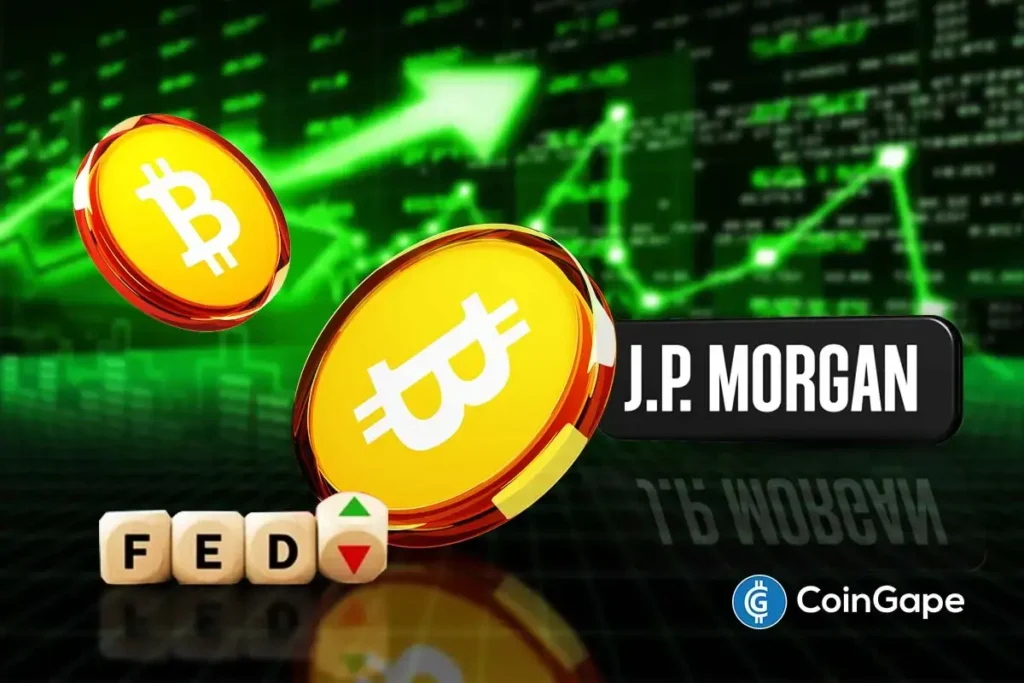Bitcoin’s Price Recovery: Impact of Anticipated Fed Rate Cuts
In recent weeks, Bitcoin has experienced a significant rebound, regaining the $91,000 mark following a period of downward pressure. The cryptocurrency saw a resurgence of around 4.35% in just 24 hours, countering a nearly 20% decline that transpired over the previous month. This renewed momentum is largely attributed to shifting market sentiments, with traders increasingly betting on a Federal Reserve (Fed) rate cut anticipated in December. The prospect of a shift in U.S. monetary policy has become a critical driving factor for various financial markets, including cryptocurrencies.
Factors Behind Bitcoin’s Price Rebound
The rise in Bitcoin’s value coincides with a predictive analysis issued by J.P. Morgan, which suggests that a potential 25-basis-point cut could occur at the upcoming Federal Open Market Committee (FOMC) meeting. Previously, the bank was convinced that rates would remain steady until January; however, recent comments from key Fed officials have prompted a reevaluation. According to J.P. Morgan economist Michael Feroli, the latest communications from Fed officials, particularly New York Fed President John Williams, have increased the likelihood of a rate reduction in the near term.
As the market digests this information, the optimism surrounding Bitcoin solidifies. Investor confidence often correlates with monetary policies; thus, impending rate cuts could enhance Bitcoin’s appeal as a hedge against inflation and traditional market volatility. Traders are currently prioritizing these insights, navigating the market dynamically to capitalize on any potential opportunities.
J.P. Morgan’s Insights and Market Reactions
J.P. Morgan’s economic analysis has spotlighted pivotal conversations amongst Fed representatives that indicate a shift in their stance. While some officials, like Federal Reserve Governor Chris Waller, have shown clear support for a December rate cut based on weakening labor indicators, others, such as Boston Fed President Susan Collins, stress that inflation remains a more pressing concern. This divergence in opinion underscores the complexity of maintaining economic stability and further amplifies the uncertainties in financial markets, including cryptocurrency.
Goldman Sachs aligns with J.P. Morgan’s sentiment—highlighting the implications of a delayed jobs report from September, which they argue further reinforces the case for an additional rate cut. This environment of shifting expectations has led many investors to anticipate further price movements in Bitcoin and other assets as they align their strategies according to the anticipated Fed decisions.
The Fed’s Dilemma: Rate Cuts vs. Inflation
The discussions around potentially lowering interest rates also reflect a broader narrative regarding the Fed’s dual mandate: to foster maximum employment while ensuring stable prices. While some Fed governors advocate for a rate cut, others caution against a hasty decision due to inflationary pressures. This internal debate within the Fed not only creates tension in policy formulation but also invites speculation in the markets, especially for cryptocurrencies like Bitcoin, which thrive on market sentiment and investor behavior.
In the futures market, the implication of these speculations is clear: data from the CME FedWatch indicates a notable 84.9% probability that the Fed will enact a rate cut in December. These insights provide vital information for traders and investors looking to navigate the evolving financial landscape in the wake of potential shifts in policy.
The Future Outlook: Economic Influencers and Fed Leadership
With the conversations around monetary policy heating up, it is also crucial to consider the political landscape surrounding the Fed’s leadership. Former White House economist Kevin Hassett has emerged as a potential candidate for the next Fed Chair, with some advising President Donald Trump suggesting that he is the frontrunner. Known for endorsing more aggressive monetary policies, Hassett’s appointment could further tilt the balance toward rapid rate cuts, influencing market dynamics even more significantly—especially for Bitcoin and other risk assets.
Traders are already recalibrating their strategies based on these political developments. A change in Fed leadership, combined with anticipated cuts, may create a more favorable environment for cryptocurrencies like Bitcoin to flourish, turning into a potential haven for investors seeking refuge from traditional market uncertainties.
Conclusion: Bitcoin’s Response to Monetary Policy
As the narrative surrounding U.S. monetary policy continues to unfold, Bitcoin’s price recovery emphasizes the cryptocurrency’s sensitivity to macroeconomic factors. Market participants are acutely aware that price fluctuations in Bitcoin do not solely arise from technological developments but are equally influenced by external economic drivers like interest rates and policy decisions. Traders are encouraged to keep a close watch on developments from the Federal Reserve as expectations build for possible rate cuts in December.
In summary, the interplay between Bitcoin’s price movements and anticipated Fed actions offerings a compelling insight into the evolving landscape of digital currencies. As investors assess their portfolios amidst ongoing shifts in fiscal policy, one can expect Bitcoin to remain a focal point of interest. The market’s response to monetary policy changes could pave the way for further explorations in the realm of cryptocurrencies, offering both risks and opportunities for savvy investors.


